Inspired by Supernatural: Custom Books by FineBlankBooks

The Winchester Family Business‘ “Inspired by Supernatural” article series showcases the amazing talent within the SPNFamily. The painters, sculptors, jewelry makers, quilters, artists and creators of unique craftwork that we have interviewed enrich the fandom with their beautiful expressions of love and admiration for Supernatural and its cast. Through these interviews, we hope to spread the joy that is evident in their art, expand your knowledge of the vast diversity of the Supernatural fandom, and promote the work of these independent entrepreneurs.
Today I am thrilled to share with you the multi-talented Tedra Ashley-W.. Tedra is a passionate Supernatural fan who creates the most amazing custom books bindings I have ever seen, and forges beautiful, original jewelry. This segment of our interview presents her leather bound masterpieces. Enjoy hearing her stories and seeing her homages to Supernatural, its producers and its cast!
Inspired by Supernatural: Custom Bookbinding by Fine Blank Books
Editor’s Note: I added watermarks to Tedra’s photos to protect the uniqueness and proprietary ownership of her designs.
Tedra, let’s start by understanding your craft. What is custom bookbinding?
Bookbinding is the process of creating a custom front cover, back cover and spine for a book, and attaching all the pages of the book to that outer structure. Custom bookbinding encompasses many styles of bookbinding from traditional to contemporary, but it usually refers to binding one, unique book, or very small editions of books.
In my case, I bind pages by hand, often sewing them together with a needle and thread. There is no “binding machine”. I build the covers out of layers of hand-cut binder’s board, tag board, and matte board, based on a custom design and a full-size sketch I create in concert with the customer. The fact that my books are made entirely by me, by hand, means that I can tailor them extensively to customers’ requests.

 Book made for the owner of Hilly The Impala, the fan replica car used in a The Hillywood Show video. I made a custom leather box with raised Hilly logo under the leather to hold this book.
Book made for the owner of Hilly The Impala, the fan replica car used in a The Hillywood Show video. I made a custom leather box with raised Hilly logo under the leather to hold this book.

Photo for scale. This was a large book!
 |
 |
| Moon detail. Carved binder’s board shaped with a file with carved moonscape, and covered with very thin white goatskin book leather. | Original cover sketch design for the Hilly book. |
What got you interested in bookbinding as an art form? How did you learn the craft? Have you always been artistically talented or is this something new for you?
I have always enjoyed making things, art or craft. I made my own little books from recycled paper and staples as a kid.
I first became aware of how to make a handmade book as an undergraduate fine art photography student in the early ‘90’s when one of my photography professors taught us how to make a hand-bound book for a project about photographs in sequence.
After that, I wanted to stay on campus one summer instead of going home between semesters and I needed a job. Any job. A friend got me a part-time job in the conservation department of the main library at Indiana University. I was not working with rare books (they have their own specialized conservation department and entirely separate library for those), but I was working on repairing damaged books culled from the regular stacks. They did not let the students do that much, but I started to learn about how books were constructed, and also learned that I HATE working on old, rotten books. It’s like working on a rusty car where the pieces can fall apart in your hands.
After college, I planned on becoming a photographer and worked toward that for several years while continuing to make books for my friends at home with a limited array of bookbinding tools and one old turn-of-the-last-century cast iron book press that I refurbished. I ended up living in a town in Illinois that had a small, two-person bookbindery and after a few years, I left a job in custom film developing just as digital was about to take over (yes, it was back when photographs were still taken on film) in favor of a job at the bindery, where I’ve now worked for 25 years. I learned most of what I know on the job. I created my own side business with my custom book website around 2005 as a way to make more intricate books for customers and in an attempt to try to reach a wider audience for my work.
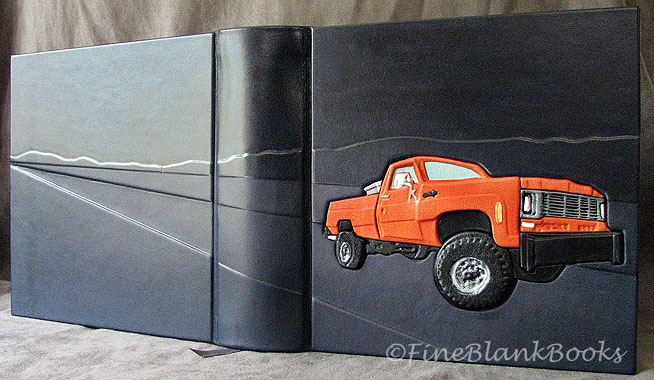

An infant’s album with very detailed raised vintage Chevy Cheyenne. The baby was going to be given the middle name of the late owner of this truck. The truck is built from many layers of hand-cut tag board, glued in a stack to create the relief look. String is used to create the intricate and very small truck grille. Each piece is individually-covered with paper-thin, hand-pared goatskin book leather. Each color represents a different piece.
How did you discover Supernatural and its fandom, and what gave you the idea to start binding Supernatural-themed books?
I watched Supernatural for the first time on September 13, 2005, the night the pilot aired. I saw that image of Mary burning in the pilot’s promotional trailer, and had to find out what that was about! I had been a huge fan of The X-Files and was looking for something to fill the void after The X-Files ended. I was instantly hooked, drawn in by the brother relationship and Jared and Jensen’s chemistry. I watched casually, alone, for several years but eventually ventured online to discuss episodes with other fans on the Supernatural Fan Wiki (a smaller, fan-run site separate from the SupernaturalWiki).
First, I started binding books with Supernatural-themed covers for myself and my fandom friends. I just loved the show so much and was so inspired by the look of it (all credit to Jerry Wanek and his team). There were so many sources of inspiration from the Impala to the protective symbols to the design elements of the motel rooms to the Men of Letters bunker…the sources of inspiration were endless. Since my main chosen art form is bookbinding, that’s where all those influences manifested.


Custom rebinding of Family Don’t End with Blood with the title carved into the underlying board of the front cover and some contributors depicted in the style of a family tree/genealogical chart to imply the Supernatural Family. The stamping of the lines and the letters was extremely tricky. Each element had to be added in a separate stamping process. The stamped lettering, lines, and tree on this cover were applied in at least 46 separate stamping operations. I made a leather clamshell box to hold the book.
I’ve seen many of your books and I’m lucky enough to own several small samples of them myself. Please explain how you work with your clients to make books that are so special and personally meaningful to them.
Working with my clients on a commission is a true collaboration. My goal is to make them what THEY are picturing. I love being able to bring to life something that was previously only an idea. It is hugely rewarding to take someone’s idea and turn it into a tangible object.
I start each collaboration by getting as much information from my customer as possible. If it’s a blank book, how many pages do they want? What page size? We move on to how they want the cover to look and I ask them to tell me as much as they can about the book they are picturing in their head. Then I take that information and figure out how close I can get to their request based on available materials, time involved (both go into the cost of a project), and my own skill level. My clients have to be willing to exchange at least several emails about a project to work out all of the details.

Highly-customized engagement book. There is a shallow square cut-out inside this book to hold an engagement ring for a proposal. The colors and themes (sunflower on the front cover and animal skulls on spine stamped in black using custom-made metal dies for hot-foil stamping) were specified by the customer along with the “traditional” look of the binding and raised bands on the spine. I fabricated the copper ring at the center of the sunflower from copper sheet – cutting it out with a jeweler’s saw and giving it the “domed” shape as well as the high polish.
 Custom journal with elements from the game “Myst”. The copper element was completely hand-cut from hammered copper sheet with a jeweler’s saw to fit the other elements of the cover exactly.
Custom journal with elements from the game “Myst”. The copper element was completely hand-cut from hammered copper sheet with a jeweler’s saw to fit the other elements of the cover exactly.
Besides being artistically impressive, the value and uniqueness of your books is increased by using materials “authentic” to the book’s subject matter. What does that mean, and why you do it? How do you acquire your authentic materials?
When I am making a custom binding for a published book (technically a “rebinding”), I like to design a cover that reflects some part of the text. For Supernatural, there are so many ways to go! When I rebound a copy of Family Don’t End with Blood, I thought about the Supernatural Family, which led to thinking about a family tree. I wondered how I could create a different type of family tree that reflected something about Supernatural, and landed on the idea of a shooting range target. Many weapons are used on Supernatural and I believe the bunker has a firing range. So I designed a book cover featuring a target with bullets embedded in it. The number of bullets in the target corresponds to the number of contributors in the book. Like a family tree, the bullet pattern has Jared and Jensen at the center, ringed by the other cast members who contributed chapters, ringed by the fans who contributed chapters. It began to look not only like a target, but like rippling rings on the water when you throw a stone into a lake; the whole Supernatural Family of actors and production people and fans radiating out from Jared and Jensen at the center.
I decided the bullet casings had to be real to be as authentic as possible to Supernatural, and was able to find a fellow Supernatural artist (@zerbehunter who makes and sells bullet casing jewelry at fan conventions) who was willing to send me casings. I embedded those casing in the target on the leather cover I built, and sewed the pages together with thread instead of the glue-bound paperback from the publisher.

Rebinding of Family Don’t End with Blood with the Supernatural family tree re-imagined as a shooting range target.

Detail of Family Don’t End with Blood rebinding with embedded real bullet casings and stamped names of those who contributed chapters to the book. (Sidebar: This was created several years ago. Please try to see this within the intended Supernatural context and not in light of the terrible mass shootings happening in the U.S. with increasing frequency.)
In another case, I did a rebinding of There’ll Be Peace When You are Done for author/editor Lynn Zubernis and created a box for her custom book rebinding that featured actual chrome trim from a real ’67 Impala. Though not show-used materials, I do like how they make the book feel more authentic. The pieces from the Impala came from an Impala restorer in Tennessee. When I think about it, many of these “authentic” materials came from other Supernatural fans. Just another reason why our worldwide Supernatural Family is so incredible!

Night scene of Sam and Dean and the Impala on a custom binding of There’ll Be Peace When You Are Done…


…with custom clamshell box made with actual Impala trim detail set into a leather panel on the box cover.
Another project was a series of small books that had a Men of Letters bunker theme. On those, I used pocket watch glass that was over 100 years old which seemed very fitting to the “old drawing room” feeling of the bunker’s library. I used a photo of the bunker set from the show on the front cover. All of these were gifts and none were sold, so no profit was made.

Small bunker gift book with vintage brass hardware and pocket watch glass on front over an image of the bunker’s library.

Variations of bunker books, all with watch glass over the photo and under the metal hardware. You can see the scale/size here.
What process do you go through to custom bind books?
If I am making a blank book, I start by cutting sheets of blank archival paper to size. These sheets are folded, then grouped together and nestled inside each other into “signatures” (groups of folded pages). Holes are punched through the center of each signature by hand and then the signatures are sewn to one another through those holes with a needle and cotton thread. This type of sewing is called “signature sewing”. Signature sewing in this way ensures that a book will lay open completely flat all the way to the center.
Endpapers are attached (the sheets that will be glued to the inside of the front and back covers). I regularly use hand-marbled papers for endpapers. The outer three edges of the book are then trimmed, the spine is “rounded” (curved with a hammer), and backing cloth is attached with an archival glue.
Most of the time on a project is spent constructing the cover. Hard covers are cut to the correct size from large sheets of acid-free binder’s board. If I am doing a cover with raised designs, I start cutting layers of tag board that will be glued in a stack to create the raised designs. Those elements may need to be covered individually with different colors of hand-pared leather depending on the design.
The majority of the cover is usually covered with one type of leather. I use real leather, cut from larger tanned hides prepared specifically for bookbinding. Once cut to size, the leather and board are glued by hand with archival glue and pressed flat in a press. The leather is then turned in around the edges of the board and the corners of the leather are mitered.
If there is foil lettering on a cover or spine, it is done at this point. Each word is set up letter-by-letter, upside-down, in very old-fashioned moveable metal type, clamped, heated and pressed onto the surface of the cover (all with hand tools).
The pages are then pre-glued into the cover, and the endpapers and backing cloth are glued and pressed (in a hydraulic press under the pressure equivalent of parking a car on top of the book). If there are raised elements that are a different color from the rest of the cover (as in many of the examples I’m sharing here), those separate pieces are permanently attached last.
I have a few pages on my website with “in progress” photos of making a book and a custom box. One of these features a Supernatural-themed fan fiction binding, shown here:
 The fan fiction binding that is featured on my website. The raised design on the cover is inspired by the patterns of the wallpaper and the design of the motel room divider screens used on Supernatural.
The fan fiction binding that is featured on my website. The raised design on the cover is inspired by the patterns of the wallpaper and the design of the motel room divider screens used on Supernatural.
My website’s example shows the “oversewing” process that uses a large sewing machine from the 1930’s to sew individual sheets together. The photos of the rest of the process correspond to what I’ve written here.
How long does it take to create a custom binding?
It takes anywhere from 8 to more than 100 hours. It varies greatly depending on the complexity of the cover design. I rarely work on one project all the way through at once. I will spend several hours on a project each day but often have several projects going at the same time.
What types of materials do you use to bind the books?
All of the materials I use are archival, including the glues. For blank books, I use archival paper for the pages, which will last hundreds of years with proper care. I use cotton thread to sew the pages together. Most of my covers are made of leather since leather allows me to do many of the techniques I use the most (like raised designs). I use leather made for bookbinding that is longer-lasting and more fade-resistant than garment or upholstery leather. I can make covers with cloth-based cover materials, but that does not allow for raised designs because bookbinding cloth does not stretch enough. Covers are often decorated with hot stamped foil lettering. I also make clamshell boxes that fit the book exactly and are entirely handcrafted.
I prefer to think of myself as a craftsperson because I want my books to function really well and last for decades. The structure and the materials matter to me as much as the final look. I take things into account like the archival properties of the page paper, the durability of cover materials, and even the grain of paper and board (paper and board flex easier in one direction than another, which can impact the longevity of a book if the grain is going the “wrong” way).

A pair of books with retro camper designs. The one on the left was sold on my site. The one on the right was made as a commission for a couple who had restored this old camper. It was to be their camping road trip journal. On both of the retro camper books, the “purple mountain” landscape hills extended to the back cover as well as in a raised area across the spine.
Are all your books one of a kind?
I do not like to repeat a cover design exactly, and even when I try (if a customer requests a “volume 2” of something I previously made them), they are never exactly the same since this is not a mechanized process.
What types of books do you bind?
Though the Supernatural projects are my favorite, most of my commissioned work has nothing to do with Supernatural. I have made books with a VERY wide variety of different themes. I have made guest books for homes and vacation homes. I made a box that was commissioned to be gifted to the Dalai Lama. I have bound self-published cookbooks. I have made many wedding guest books. I have made retirement books containing collections of letters from co-workers as a gift for someone who is retiring. I have made clamshell boxes for rare books and first editions for book collectors where I never work on the book itself, but make a custom box to protect it. I have also done bindings for self-published fan fiction. I love binding fan fiction and wish I had more of those jobs. I care not about the subject, ship, or how explicit. I enjoy binding it all, regardless.
Over the years I have made every type of blank journal, including travel journals, daily journals, and books where people record handwritten family histories or recipes. I have made albums and scrapbooks (a very different construction from hand-sewn books and not my favorite), custom boxes for books, and rebindings of published books where a published paperback (or hardcover) is disassembled and rebound in a fancier cover.
I used to make and sell one-off handmade books, but I found that custom orders are better for me so that I can make something exactly to my customers’ specifications. Now I do only custom orders and very few already-finished books. Any already-finished books I have for sale, along with prices, can be seen on my website.

An example of a rare, blank book for sale on my website. The cover design was very intricate and time-consuming with all of the separate pieces and different types of leather. The design of this cover was inspired by several different real-life vintage motel signs that I combined into one design. This book has a bit of everything including foil stamped stars in a galaxy that goes across the spine to the back cover. It took about 25 different stamping operations to stamp all of those background “stars” on the leather with pewter hot foil. Star-shaped stars were added to the sign itself with a die and hot-foil stamping in silver foil. Each star is stamped one at a time. The “no vacancy” part of the sign is also stamped in foil. I gave the moon a metallic finish with rubbed gold pigment.
 These are the marbled endpapers at the front and back of the Sky Ranch Motel book that fit the theme and colors of the cover perfectly. I do not make my own marbled paper – that is an art in itself – but I do buy marbled paper from all over the world for use in my books; mainly hand-marbled paper from Spain, Italy, and England.
These are the marbled endpapers at the front and back of the Sky Ranch Motel book that fit the theme and colors of the cover perfectly. I do not make my own marbled paper – that is an art in itself – but I do buy marbled paper from all over the world for use in my books; mainly hand-marbled paper from Spain, Italy, and England.

A VERY intricate crab design on a 10×10 “recipe scrapbook”. This very thick album/scrapbook-construction book is wedge-shaped until it is filled with pieces of paper and recipe cards. The spine is thick to allow space for the thickness of all that “stuff” that will be attached to the pages. This was commissioned by a customer in Australia.

I created each piece of this crab from carved board covered with hand-pared leather and accented with black wax at the joints. This is the most time-consuming type of work I do. A book like this can run into the $600-$700 range.
What are the smallest and largest books you’ve bound?
Hmmm…I haven’t had many requests for small books as commissions, but see the photo at the very end of this article for one of my favorite smaller books that I made for myself. I have made small books for fun and to use up smaller-sized materials.
Very large books are incredibly challenging. I do have size limitations since I have to fit a book into various clamps at different parts of the process. My maximum page size for a book is 12” wide by 15” tall by 3” thick. I think I pushed those limits once and made a book that was 12” wide by 16” tall by 4” thick. That was a challenge. I am personally drawn to smaller, more precious, less monumental books, but many of my customers want large books – or they think they want large books. I often insist they take out a ruler or yardstick and take a good look at the size they are requesting. For example, a book that’s 22” wide when closed will be wider than a yard stick when open! People aren’t always able to picture this. I still occasionally get a customer who is surprised at how large their book is, even though I made it exactly the size they requested.


A very large and very thick blank book with an intricate “Tree of Life” design. This is at the upper limit of the size I can do.
What was the hardest project you worked on, and what made it difficult?
The book and box set I made that took the most time was a rebinding of the book There’ll Be Peace When You are Done. These books were gifted to Jared and Jensen for the chapters they contributed to the book. They were relatively small (roughly 6”x9”) but the level of detail was intense and the covers were made up of so many different pieces that each had to be created from layers of thin board. I had to pare all the different leather colors down by hand to cover those parts. (Leather paring is a process where leather is dragged over a razor blade mounted in a clamp that separates the back of the leather from the front, rendering the front-piece paper-thin so that it can take the shape of the raised designs underneath it.) It is so easy to put a hole in a piece of leather while paring it, so to have so many different colors in a cover is a challenge. It’s like making a puzzle that has to fit together perfectly. 100 hours went into each book and box set for this There’ll Be Peace… project:

Custom binding of There’ll Be Peace When You Are Done, my most time-consuming project.

Original sketch/pattern for custom binding of There’ll Be Peace When You Are Done. Unfortunately, the satellite dish did not make it into the finished design because it ended up falling right in the hinge area of the back cover.

In-progress – Harvelle’s sign before (tiny raised cut from thin board and in the case of the “Harvelle’s”, done with glue-impregnated string under the leather) and after, once pigment has been “painted” on.

A hidden detail on the clamshell box made for Jared and Jensen’s books (box and books shown together in the article’s header). You cannot see this when it is closed, but when open, the front edge reveals the very small silver foil stamped words “I’m Proud of Us”.
The most difficult project would probably be a book with many parts and a closure. One that comes to mind is a Book of Shadows for a Wiccan customer that had very complex raised designs, multiple types of leather, and a hairpin-style closure on the front edge that I crafted from sterling silver. Yup; that one was probably the hardest even if the There’ll Be Peace… project above took more time.

Book of Shadows – a very intricate project with a sterling silver closure.


Using my metalsmithing skills, I created this hairpin-style closure for the Book of Shadows. I invented it as I had never seen a closure like this on another book before. Someone else may have done it before me, but I was not following anything previously-made as a reference. The pin closure features an ankh symbol and pentagram, all cut and shaped from sterling silver sheet and wire, attached with silver solder, soldered together with an acetylene torch.
Why create such intricate work with such high quality materials? Isn’t that painstakingly hard to do? What do you personally take away from each project?
Yes. It is painstaking and slow and sometimes very challenging, even after all the years of experience I’ve had.
I use the materials I use because I want to make the books now that show up on Antiques Roadshow long after I’m gone.
Beyond that, what is most gratifying to me is when a customer tells me that if their house caught fire, the book I made them is the one thing they would grab to save first. When a project is finished, I feel satisfaction. It’s a powerful feeling to be able to create something that was previously only an idea. That feeling of satisfaction at being able to deliver something to my customers that they could imagine but could not execute themselves is the same thing I experience when I commission something from another artist – someone who has skills I don’t possess – like painting or working with fabric.
I learn something from every project! Perhaps I’ll learn something useful to add to my skills or perhaps just the knowledge that I’ll never try “that” again.

A commissioned journal with motel and Impala theme. In this case, the Impala was stamped using a large metal die image I had made years ago. The car was stamped in black using hot foil stamping onto gray leather that was wrapped around a separate piece of matte board. Each color on the motel sign is a separate piece and the letters are actually cut out to show the red leather color under the turquoise. The sign took so much time on this book that it became necessary to save a little cost on the car by stamping it with a die (I could not do that car as a raised design very easily in that small size, so stamping was better). This cover was accented with wax to darken the landscape and road areas as well as silver pigment (basically permanent paint) painted-on clouds.
What makes your books different from other leather bound books or journals?
There is definitely a place for the mass-produced journals. They have paid to be licensed so they can use images of the actors from the show and I am definitely jealous of some of their lovely graphics and page designs. I am not licensed so I can make and sell books with general Supernatural themes (sigils, Impalas, a silhouette of Sam and Dean sometimes), but nothing with their actual images (unless I’m gifting a book and not profiting). In a way, I like that because it’s forced me to be more creative.
My books differ from mass-produced books in many ways. They are very heavily built. They can last a lifetime, or longer, with proper care. I also have the ability, since my books are one-offs, to highly customize a design to my customers’ requests.
Most of the time, the book I make for someone will be the only one of its kind in the world. Ever.

Guest book that I made and sent to the Family Business Beer Company right before they opened to wish them luck in their new venture.
Have you had any projects that were extra special to you, or do you have a “dream project” that you haven’t yet started?
Several projects have been very special. The first that comes to mind was a rebinding I did of Jerry Wanek’s (Supernatural‘s Production Designer) coffee table book of set photos. I did it as a gift to him. It was rewarding to get to pour time and effort into something for someone whose art has been such a huge inspiration to me for over a decade. Jerry is a wonderful man, so kind to fans. I have been involved in several Q&A Zooms he’s done with fans and he takes so much time with us. To be able to get a very favorable reaction to my work from him made my life. I respect his skill and talent so much.

Jerry Wanek’s gift, a rebinding of his coffee table book of 15 years of Supernatural set photos.
I also greatly enjoyed rebinding (as a gift for the author) a copy of Felicia Day’s autobiography, You’re Never Weird on the Internet (Almost). Handing someone their book in a handmade, custom binding almost always gets a good reaction! It’s a rewarding way to feel like I’m giving back to people whose own work has given me so much enjoyment.


Rebinding for Felicia Day with delicate “computer motherboard” design. I read that orange was her favorite color. The cover design was based on the endpaper pattern.
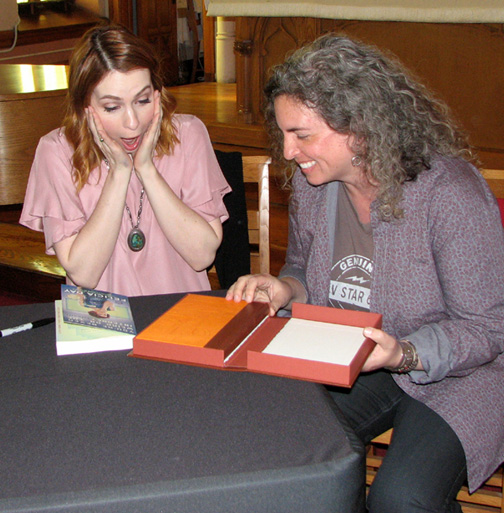
Giving the book to Felicia at a book signing event for her autobiography.
Outside of Supernatural, it was definitely an honor to be asked to make a box that was presented to the current Dalai Lama when he visited Rice University in Texas years ago. The design of that box had more to do with Rice University, since it was presented to him filled with objects that were gifts on the occasion of his visit, but it was an honor to make something for someone who works endlessly towards peace. I have this image, though, of the warehouse at the end of Indiana Jones where all the gifts given to Dalai Lama in his world travels are stored! He receives gifts everywhere he goes. I imagine that the box I made is in some kind of warehouse like that!
I feel that after 25 years as a bookbinder, I have gotten to make almost everything I ever wanted to make and explore every bookbinding idea I’ve had thus far.
I suppose a dream job would have been a commission to make something that would have been used onscreen in Supernatural but Jerry Wanek had an entire art department to create everything needed for the show.

One of my first ambitious Supernatural books I made for myself years ago. The Impala on the front is rendered in different types of leather in a raised design with inset “bitch” and “jerk” word bubbles. The Clamshell box is in black leather and silver book cloth with recessed “Impala” Chevy logo lettering hand-cut into the underlying board.

The back of the Impala book with tail lights in the dark.

Detail of the Impala. Each different color is a tiny separately-covered piece. The raised areas are accented with a rubbed silver pigment to suggest chrome where appropriate.
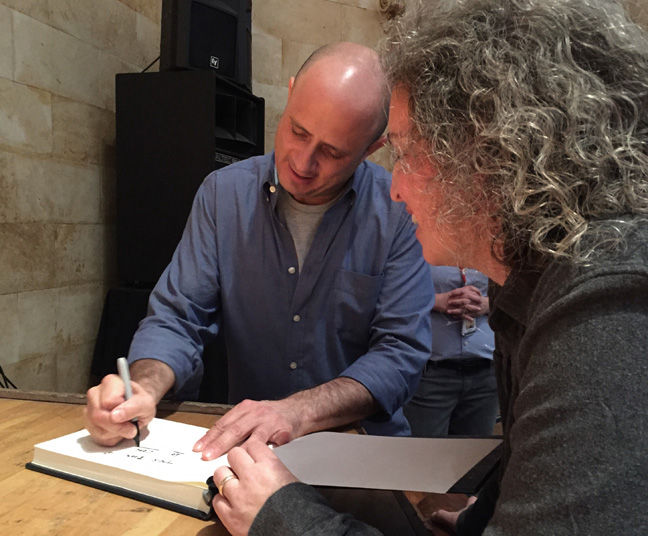
I was so thrilled to have the chance to have Eric Kripke sign this book at a talk at the Toldeo Art Museum in 2019.
Have you ever done commissioned work for the cast?
I have never been commissioned by a Supernatural cast member, but over the years I have made and gifted several books as “thanks yous” to cast members. In addition to the books already mentioned, I bound books for Hugo Ateo (Cesar in “The Chitters” episode) and Lee Rumohr (Jesse in the same episode). I encouraged them to contribute to There’ll Be Peace When You are Done since their characters made an impression on me. I talked about Cesar in my chapter (as one of the fan contributions) in that book. I was elated that they agreed to participate and wanted to thank them with custom bindings.

Custom binding gifted to Hugo and Lee depicting the Impala rolling up to Cesar and Jesse’s retirement ranch in New Mexico.

Custom box with book.

Hugo with book for scale. I received lovely messages from both actors, including a very emotional one from Lee.
I gifted Jared with two books; the first was the bullet casing rebinding of Family Don’t End with Blood that I talked about earlier because I was so blown away by his incredibly honest and touching chapter he wrote for that compilation. Jared also owns one of the two intricate copies of There’ll Be Peace When You Are Done that I referenced earlier. Jensen owns the other one. Both gifted as thanks for their involvement in that project.
Would you mind giving some examples of your pricing, and how readers could commission work from you?
I can be reached by email which is listed at the bottom of every pages of my website: http://www.fineblankbooks.com. I’ll gladly include it here too: tedra@fineblankbooks.com.
Contacting me by email is where the process starts. I’ll talk to you via email about what you want and we’ll work out all details before I give you a price for the project. Then we can go from there. If the price is too high, we can cut back on details and materials to lower it in some cases. My custom books start at around $140 and can go up close to $1,000 depending on complexity. The high end of that price range is rare. Most of my commissioned work is in the $250 – $450 range. I should note that, in many cases, almost half the cost of a project can be the cost of the materials.
I do need to mention one thing. Many of the books pictured here (like the Hilly Impala) were made with a type of leather that is no longer manufactured. I cannot replicate some of the techniques I did in the past when that leather was available. There has been no adequate substitute. My techniques have had at adapt to the leather available now. Now I have to do more of the “inset” work that gives a result more like this:

Custom blank book for a Dean fan living in Germany. The car for the cover is made up of at least 13 layers of hand-cut thin board, matte board, and string.

Finished Impala piece covered with leather and inset with other individually-covered pieces (headlights, cornering lights, license plate).
Is there anything else you would like to share with the fans?
Having done so many bindings for books, it was a highlight of my life to be asked to contribute a chapter about my Supernatural fan experience to the book There’ll Be Peace When You are Done edited by Lynn Zubernis. To be published in the same book that includes chapters by other actors, production people, show writers, and fans that I admire so much was something wonderful that I never anticipated. It was rewarding to participate in the creation of the insides of a book for publication! Creating the insides is much more difficult that creating the binding for the outside.
I have truly enjoyed making books for people for the past quarter-century (yikes!). I feel incredibly lucky and grateful to have made a living in the field of art/craftsmanship for this many years. Many never get that chance.
I never anticipated the huge impact that Supernatural would have on my art and creativity and it just goes to show that you never know where inspiration will come from. Supernatural took my work in wonderful and unanticipated directions. I can never fully express my gratitude for the amazing people I have met thanks to Supernatural and the very positive impact they’ve had in my life.
Also, I want to say a very heartfelt “thank you” to everyone who has commissioned me for a custom book over the years. YOU are what make it possible for me to do something I love to do.

A book I made for myself after the last episode of Supernatural, a small album of my favorite set photos from all of Jerry Wanek’s years on Supernatural. I made this before his coffee table book came out. It is VERY tricky to make a cover where part of the design sticks up above the rectangle of the rest of the cover. This is definitely one of my favorite books I’ve ever made.

Back of my set photo book.

I made a box for my book with an intricate raised leather cover design of a motel and the back of the Impala.

No matter how many books we featured in this interview, they’re still only a fraction of the books that Tedra has made! For more examples of the range of her projects and talent, visit Tedra’s website and social media pages:
Website: http://www.fineblankbooks.com/
Instagram: @fineblankbooks
Facebook: Fine Blank Books
Twitter: @fineblankbooks and my Twitter SPN fan account, @waywrdaughter67
Keep going to Part 2 of this interview, when we showcase Tedra’s custom forged, silver jewelry!
Enjoy Supernatural paintings, sketches, statues, Tarot cards, duct tape art, journals, dioramas, action figures and so much more by visiting The WFB’s Inspired by Supernatural article series!

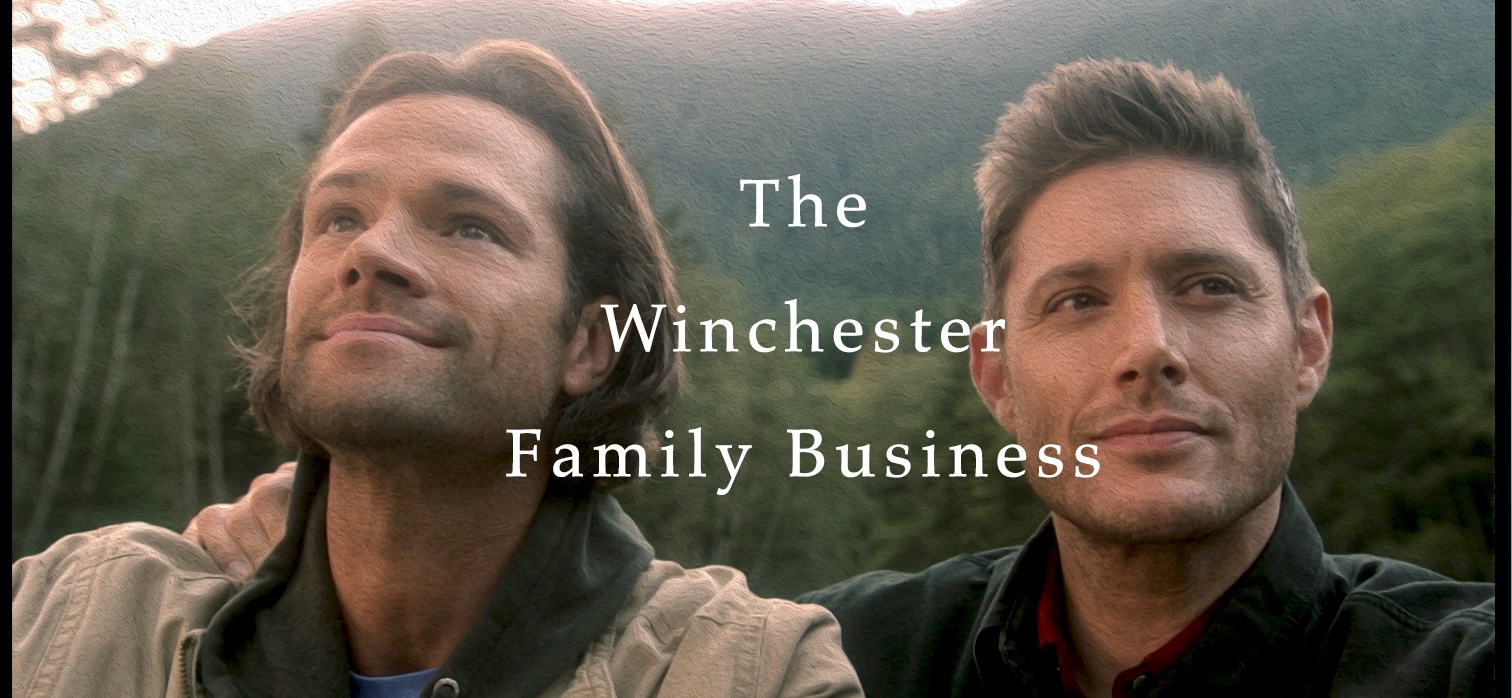
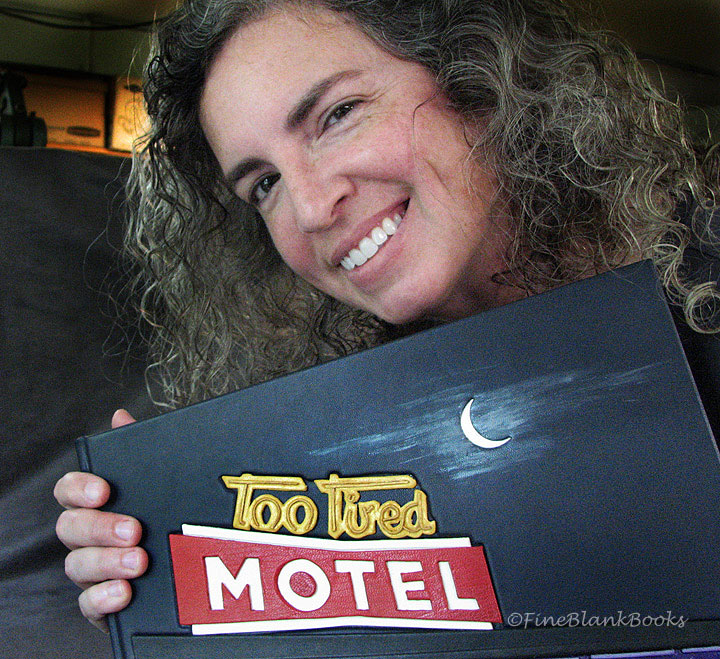


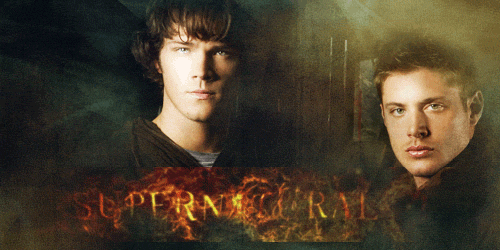

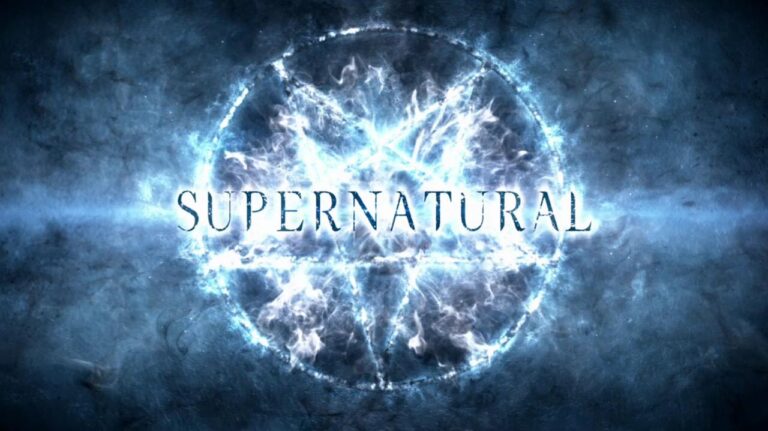
Leave a Reply